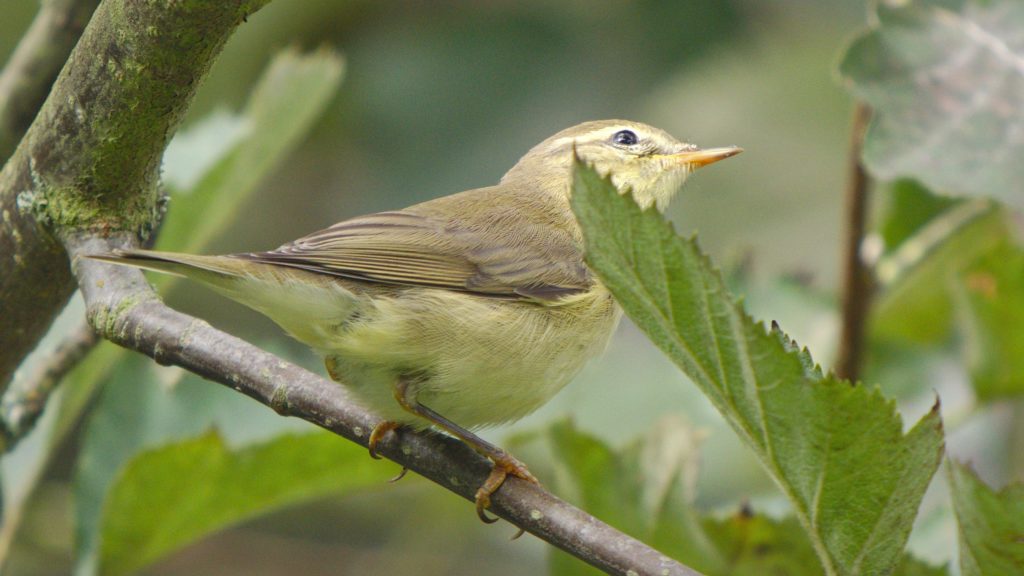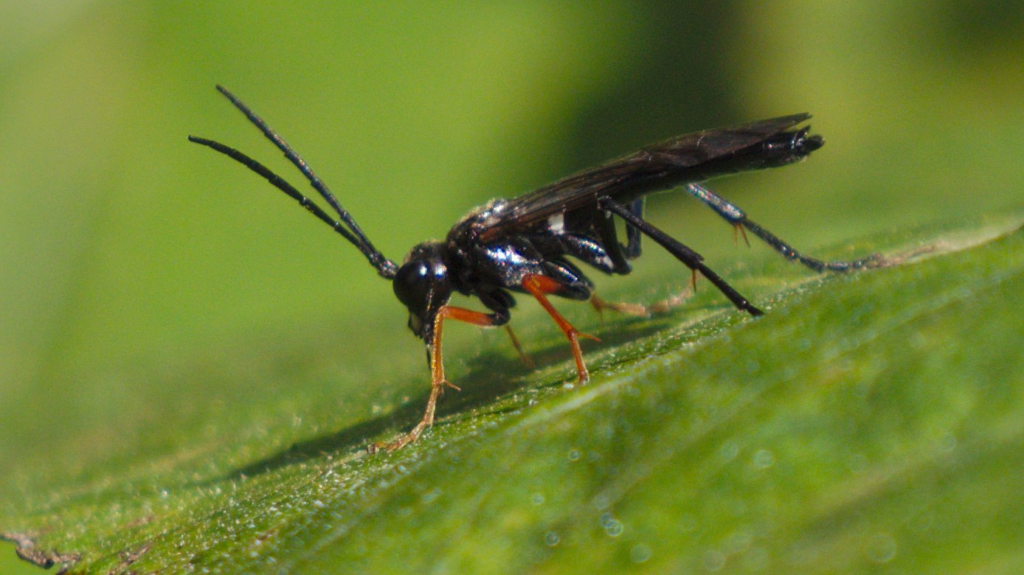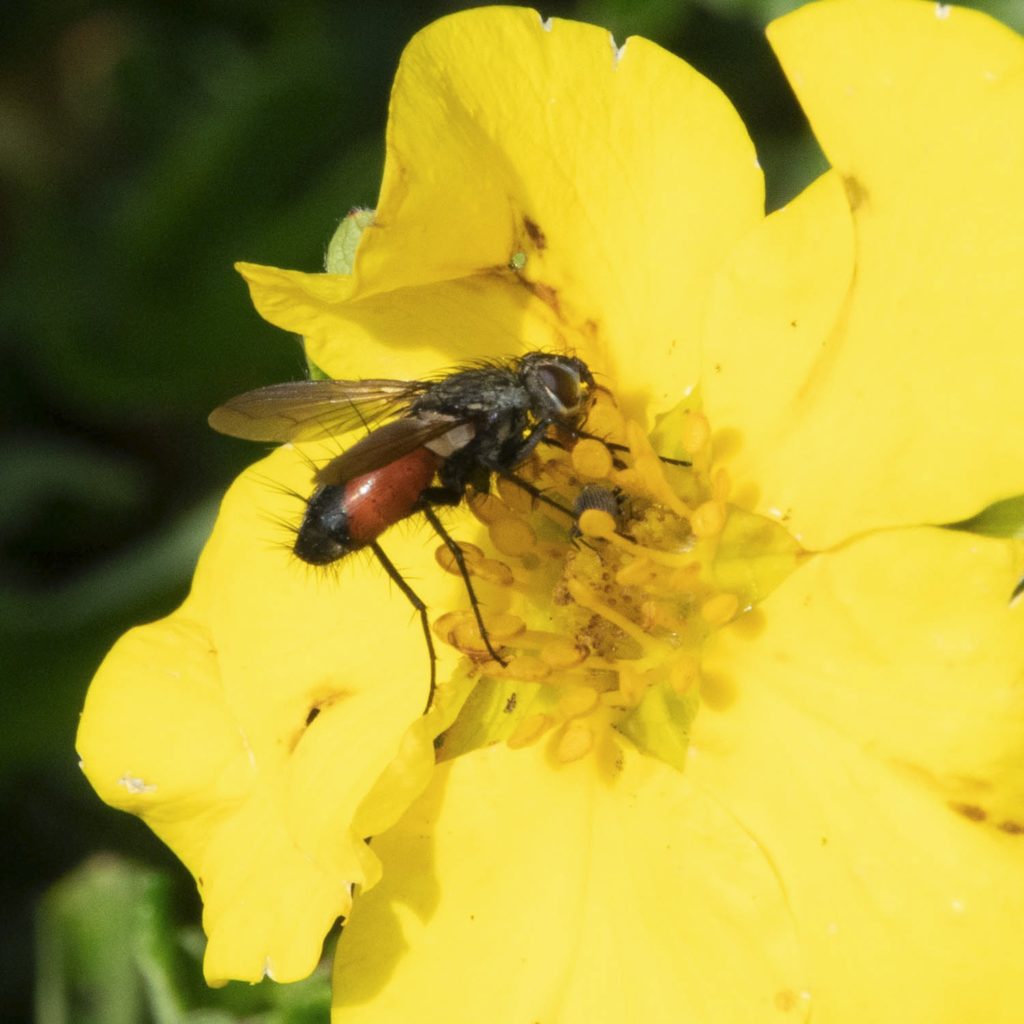
Summer 2019 seems to have been following a pattern, for August 2019, like July, was a month when both sunshine (201.7 hours, 179% of average) and rainfall (140.8 mm, 276%) were well above normal. Temperatures were also above-average through most of the month, and (again, following a pattern of several past months this year) there was a short particularly warm spell near the end of the month, with the absolute maximum being 24.5°C on 24th. The first 11 days were the least settled. Most of the month’s astonishing rainfall total fell between 3rd and 11th, with 15 mm or more on 7th, 10th and especially 11th when torrential rain amounting to 33.6 mm fell. From 12th onwards, however, the month was mostly dry and sunny with only a few showers.
At the time of compiling this report, there had been three further additions to the Garden’s wildlife list during August, taking it from 1,120 to 1,123. They were a sawfly, a parasitic wasp and a fly. Some as yet unidentified creatures may represent additional new records.
Birds: Thirty-three bird species were recorded at RBGE during August 2019. Like June and July, the month’s sightings were unremarkable. Swifts lingered late, with seven sightings, the last being on 26th; whether that will be the last record for the year remains to be seen. Chiffchaffs were silent but one was seen and photographed on 30th, and there was a single report of Blackcap (15th). Collared Dove was seen frequently, with adults and juveniles near the Pond as in July and also individuals in the Copse area, while there was a single record of Stock Dove (15th). Sparrowhawk was recorded on ten dates throughout the month. Kingfisher returned (8th onwards) with the species being recorded five times, and Nuthatch were seen or heard on four occasions. However, there were no records of Black–headed Gull, House Martin, Swallow, Jackdaw or Tawny Owl. The complete list of 33 species recorded during August 2019 was: Blackbird, Blackcap, Blue Tit, Bullfinch, Carrion Crow, Chaffinch, Chiffchaff, Coal Tit, Collared Dove, Dunnock, Feral Pigeon, Goldcrest, Goldfinch, Great Spotted Woodpecker, Great Tit, Greenfinch, Grey Heron, Herring Gull, Kingfisher, Lesser Black-backed Gull, Long-tailed Tit, Magpie, Mallard, Moorhen, Nuthatch, Robin, Song Thrush, Sparrowhawk, Stock Dove, Swift, Tree Creeper, Wood Pigeon, Wren.
Mammals and amphibians: Fox and House Mouse were both seen twice, and a Wood Mouse was recorded on 15th. Common Frog was recorded four times and Palmate Newt once.

Insects and other invertebrates: The August sunshine and warmth made it an exceptionally good month for butterflies. There were 85 sightings in all, of no fewer than twelve species. Fourteen species have so far been recorded in the Garden this year, one short of the Garden’s total butterfly list of 15; the only species so far unrecorded during 2019 is Common Blue. The most notable of the August butterfly records was a confirmed Holly Blue, seen by three observers on 23rd. One was also suspected as having been seen in May but remained unconfirmed; its definite occurrence in the same part of the Garden during August suggests that the May record was correct and would mean that the Garden’s Holly Blue colony, known since 2007, is still in existence and that both spring and autumn broods have been successful this year. Efforts to photograph the species unfortunately proved unsuccessful. A Small Copper on 15th on flowers in the Herbaceous Border was another good record. The other species recorded in August were Painted Lady (16 dates), Peacock (13), Red Admiral (5), Comma (4), Small Tortoiseshell (3) , Speckled Wood (13), Meadow Brown (4), Small White (11), Green-veined White (10), and Large White (4). August’s moth records currently await identification and may yield additional new Garden records. Two further hymenopterans were added to the Garden’s list in August; these were a male of the sawfly Tenthredo mandibularis on 8th, and a female Fabricius’ Nomad (Nomada fabriciana) on 10th. The sawfly record is one of the most northerly for the species although other Edinburgh area records for the species were made in 2010, the first year it was recorded in Scotland. Fabricius’ Nomad bee is also mainly an English species although there are several previous records from the Fife coast as well as one from the Glasgow area and two from Mull. It is not yet known whether the Garden’s record is also a new record for Midlothian (v.c. 83) although it is a possibility. Wool Carder Bees were seen on various occasions until 21st, which may well be the last date of this year’s season. There were two further records of Davies’ Colletes (10th and 27th), one of Field Digger Wasp (18th), one of Tree Wasp (2nd) and one of Pear Slugworm Sawfly (10th) as well as frequent sightings of most of the common bees and wasps. Among August’s dragonfly records, Common Darter was seen on no fewer than 13 dates while a Common Hawker was present on 10th and Emerald Damselfly was recorded on 8th and 10th. In contrast to July when only five species were seen, August was a much better month for hoverflies. Thirteen species were recorded including several that have not been recorded for some time, such as Neoascia tenur and Sphaerophoria scripta (both on 2nd), and Syritta pipens (4th). Great Pied Hoverfly was recorded on 10th and there were no fewer than five records of White-clubbed Hoverfly (between 3rd and 18th). All the common late summer species such as Dead-head Hoverfly, Banded Hoverflies, Marmalade Hoverfly and both Common and Tapered Dronefly were also frequently seen. Among other fly records, Eriothrix rufomaculata (10th) was a new Garden record, while sightings of Anomoia purmunda (4th and 10th; 2nd and 3rd Garden records), Conops vesicularis (2nd) and Dexiosoma caninum (five records scattered through the month) were notable. Adults and instars of Gorse Shield-bug, Parent Bug, Birch Shield-bug, Hawthorn Shield-bug and Forest (Red-legged) Shield-bug were all seen on several occasions, as well as a Birch Catkin Bug instar (24th), Tarnished Plant Bug (4th), and a Common Flower Bug or a related species (2nd and 7th). There were also emerging adult Common Froghoppers (7th, 18th, 25th) and Alder Spittlebug (25th). Black Bean Aphids, with attendant ants, were seen on 24th and 25th. Ladybird records included Cream-spot (2nd), 2-spot (2nd), Larch (10th), Pine (24th and 25th) and 7-spot (2nd, 4th, 18th). Other beetles included Garden Click Beetle (4th), Rosemary Beetle (5th), Figwort Weevil (15th) and Red Soldier Beetle (2nd-10th). There were no fewer than seven records of Common Field Grasshopper, from 2nd to 25th. The rather distinctive barkfly species Graphopsocus cruciatus was also seen on 25th. Wolf Spiders were seen on four dates and one of the two bright green Cucumber Spider species was also seen but not definitely identified. Finally, Garden Snail was seen twice (10th, 20th).

